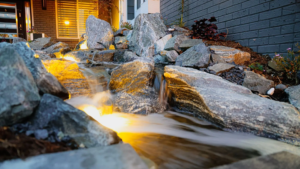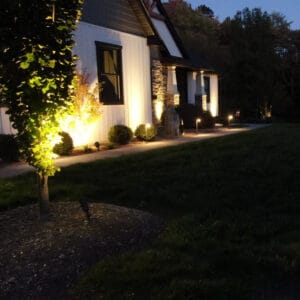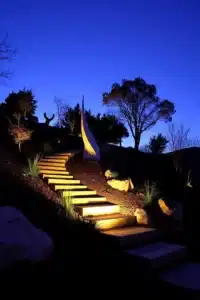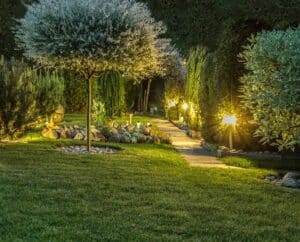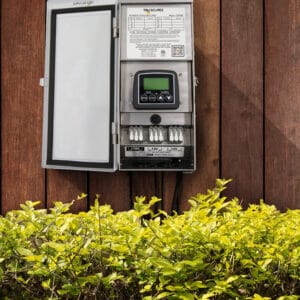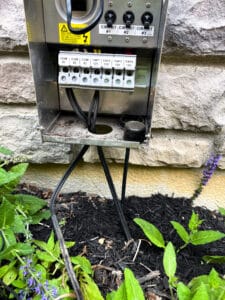Does your beautiful garden, the one you’ve poured so much time and effort into, simply vanish when the sun goes down? For many homeowners in the United States, outdoor lighting is an afterthought—a functional necessity rather than a design opportunity. But what if your garden could offer a completely new, enchanting experience after dark?
A well-designed garden lighting scheme does more than just illuminate pathways; it can dramatically boost your curb appeal and adds a crucial layer of safety and security. This article will guide you through creative garden lighting techniques that turn your yard from invisible to inviting. You’ll learn how to layer light, highlight key features, and choose the right fixtures to create a stunning after-dark oasis. For a complete overview, check out our ultimate guide to transforming your outdoor space.
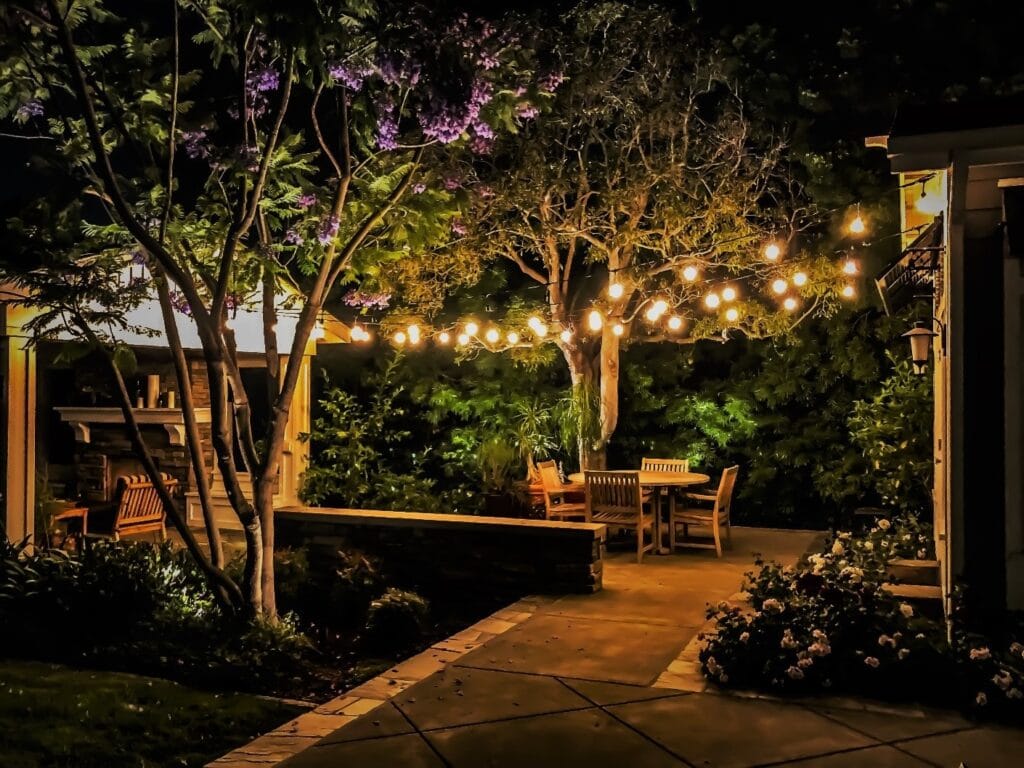
The Foundation of Great Garden Lighting: More Than Just Brightness
Before you start adding lights, it’s essential to understand the basic principles that separate a beautifully lit garden from a glaring, over-lit one. Effective garden lighting is about creating mood, depth, and visual interest. It’s a delicate balance between light and shadow.
Think of your garden as a canvas. Instead of flooding the entire area with light, which can flatten the space and feel like a stadium, the goal is to paint with light. By strategically placing fixtures, you can draw attention to your favorite elements—a majestic tree, a charming water feature, or a colorful flowerbed—while allowing other areas to recede into soft shadows. This interplay creates a sense of mystery and drama that is visually captivating.
Layering Light: The Three Core Elements
Professional lighting designers, like the experts at the American Society of Landscape Architects, often talk about layering light, a technique that involves using different types of lighting to achieve a balanced and cohesive look. This approach typically involves three main layers: ambient, task, and accent lighting.
- Ambient Lighting: This is the general, overall illumination that provides a soft glow and sets the foundational mood of your garden. Think of it as the base layer of your design. Low-voltage path lights or soft wall washes can create a gentle, welcoming ambiance.
- Task Lighting: As the name suggests, this type of lighting is functional and focused on specific activities. It ensures safety along walkways, steps, and around outdoor kitchen or seating areas. Path lights and step lights are perfect examples of task lighting that guide you and your guests safely through the garden.
- Accent Lighting: This is where the magic happens. Accent lighting is used to highlight specific architectural or natural features. By focusing a narrow beam of light on a beautiful sculpture, a textured tree trunk, or an elegant fountain, you create focal points that add character and drama to your garden.
By combining these three layers, you can create a garden lighting design that is not only beautiful but also practical and safe.
Creative Techniques to Make Your Garden Shine
Now that you understand the fundamentals, let’s explore some specific techniques that will bring your garden to life after dark. These methods, commonly used by landscape professionals, can be easily adapted for your own outdoor space.
Uplighting: Creating Dramatic Flair
Uplighting is a popular technique for adding drama and highlighting the vertical elements in your garden. By placing an accent light at the base of a tree, a column, or a wall and aiming it upwards, you can create a striking effect. This technique emphasizes texture and form, turning a simple tree into a living sculpture at night.
- How to Do It: Use an accent or well light positioned a few feet away from the base of the feature. Adjust the angle to control the spread of light. A narrower beam will create a more dramatic, focused effect, while a wider beam will provide a softer wash of light.
- Best For: Mature trees with interesting bark or branching structures, architectural columns, and garden walls.
Downlighting: Mimicking Natural Moonlight
For a more subtle and natural look, consider downlighting. This involves placing a light fixture high up in a tree or on a structure and directing it downwards. The light filters through the leaves and branches, casting soft, dappled shadows on the ground below, much like you can achieve a moonlighting effect.
- How to Do It: Secure a fixture high in the canopy of a large tree or under the eaves of your home. Aim it downwards to illuminate a patio, pathway, or flowerbed below.
- Best For: Creating a serene, romantic atmosphere over seating areas, gardens, and walkways.
Wall Washing: Adding Depth and Dimension
If you have an attractive wall, fence, or hedge, wall washing can add a beautiful, soft glow to your garden’s perimeter. This technique involves placing a light source close to a vertical surface to create a smooth, even distribution of light.
- How to Do It: Position a wall wash light or a wide-beam accent light near the base of the wall. The light will graze the surface, highlighting its texture and color.
- Best For: Stone or brick walls, decorative fences, and dense hedges. It creates a beautiful backdrop and can make a smaller garden feel more spacious.
Path Lighting: Guiding the Way with Style
Properly lighting pathways and steps is crucial for safety, but it doesn’t have to be boring. Instead of creating a “runway” effect with lights in a straight line, stagger your path lights on alternating sides of the walkway. This creates a more organic and visually interesting journey through your garden.
- How to Do It: Use low-profile path lights spaced approximately 6–8 feet apart. Opt for fixtures that cast light downwards and outwards to minimize glare.
- Best For: All pathways, steps, and garden entrances.
Choosing the Right Tools: A Comparison of Garden Lighting Fixtures
The fixtures you choose are just as important as the techniques you use. Low-voltage LED lighting systems, like those offered by Tru-Scapes, are the industry standard for their durability, energy efficiency, and ease of installation.
| Lighting Technique | Recommended Fixture Type | Key Benefits |
| Uplighting | Accent Lights, Well Lights | Creates dramatic focal points, highlights texture and height. |
| Downlighting | Accent Lights (mounted high) | Produces a natural, moonlit effect; provides soft, ambient light. |
| Wall Washing | Wall Wash Lights | Adds depth and dimension; highlights attractive vertical surfaces. |
| Path Lighting | Path Lights, Step Lights | Ensures safe navigation; creates a welcoming and organized look. |
Frequently Asked Questions About Garden Lighting
Q: Will professional garden lighting increase my electricity bill significantly?
A: Not at all, especially with modern low-voltage LED systems. According to the U.S. Department of Energy, LED lights use up to 80% less energy than their older halogen counterparts, making them an incredibly cost-effective solution for illuminating your entire garden.
Q: How do I avoid creating light pollution or annoying my neighbors?
A: This is a great question. The key is to direct the light where you need it by following responsible outdoor lighting practices. Use fixtures with built-in shields or adjustable heads to aim the light downwards. Avoid pointing lights directly at your neighbor’s property or up into the night sky. The goal is a subtle glow, not a spotlight.
Q: Can I install a garden lighting system myself?
A: While many homeowners are savvy DIYers, a professional installation ensures optimal placement, proper wiring, and long-term reliability. A professional can help you design a layered lighting scheme that truly enhances your garden’s best features.
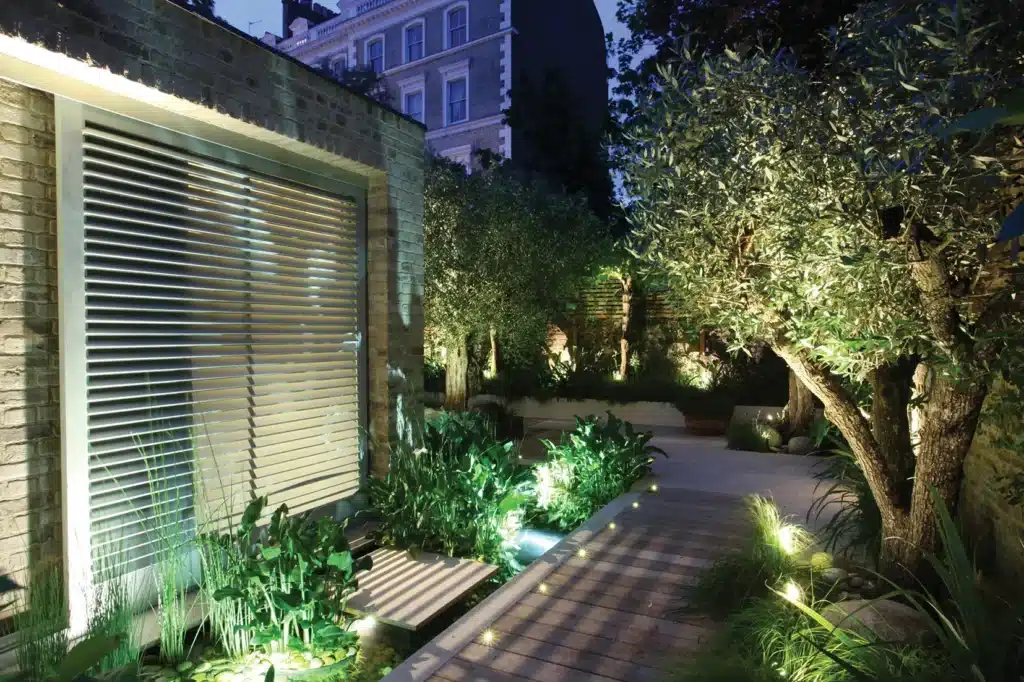
Your Garden’s Nightly Debut Awaits
Your garden holds incredible potential to be a source of beauty and enjoyment long after sunset. By moving beyond purely functional lighting and embracing creative techniques like uplighting, downlighting, and wall washing, you can unlock a whole new dimension of your outdoor space. A thoughtful garden lighting plan not only boosts your home’s curb appeal and value but also enhances your home’s security and safety, providing a beautiful environment for evening relaxation and entertainment.
Ready to see your garden in a whole new light? Start by identifying the key features you want to highlight and consider how a layered lighting approach can bring them to life. We’d love to hear your ideas! Share your favorite garden lighting tip or ask a question in the comments below.


